Wind
Heather Broman
Energy Storage
Accure Battery Intelligence
Wind
Dr. Sandeep Gupta

Bishop Lifting (Bishop), a portfolio company of Altamont Capital Partners, announced the completed acquisition of Oceanside Equipment (Oceanside), a leading wholesale distributor of rigging and mooring products. Headquartered in Dartmouth, Nova Scotia, and with a location in Mount Pearl, Newfoundland, Oceanside has been serving customers since 1990 when Greg Maloney started the company as an aquaculture industry distributor. Since then, the company has expanded its services across Canada, serving marine, mining, transportation, and manufacturing end markets.
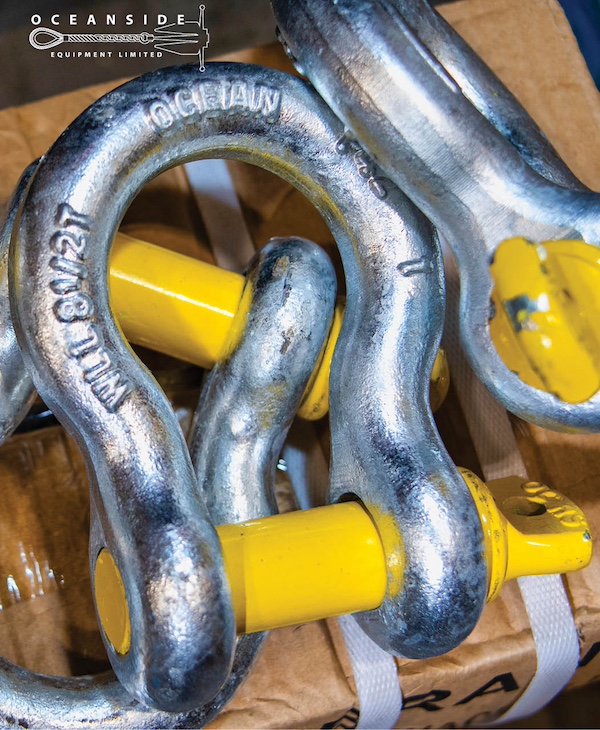
Oceanside marks Bishop’s fourteenth acquisition since 2012 and is the seventh add-on acquisition since Altamont’s investment. Oceanside’s Canada locations and strong private label OCEAN offering support Bishop’s ongoing strategy to become the leading provider of lifting products and services not only in the United States but across North America. Post-acquisition, Oceanside will keep its branding and its teams, with Greg Maloney, Gary Sullivan, and Vincent Penton continuing in commercial and leadership roles.
“The acquisition of Oceanside marks our first physical locations in Canada and continues our strategy to expand our core solution offerings and footprint to serve customers locally across North America,” said Harold King, CEO of Bishop Lifting. “Oceanside has strong customer relationships across Canada, and I am excited to welcome the entire team to the Bishop family.”
“Bishop Lifting is a great home for our employees and a partner to steward the business we have built over thirty-plus years,” said Greg Maloney, founder of Oceanside Equipment. “I look forward to working with Bishop to continue investing in products and distribution to serve our collective customers across North America.”
Bishop Lifting | https://lifting.com/
Altamont Capital Partners | www.altamontcapital.com

Vroom Solar, Inc. announces it has been selected by AFWERX for a SBIR contract focused on Smart Solar Management to address the most pressing challenges in the Department of the Air Force (DAF). The Air Force Research Laboratory and AFWERX have partnered to streamline the Small Business Innovation Research (SBIR) and Small Business Technology Transfer (STTR) process by accelerating the small business experience through faster proposal to award timelines, changing the pool of potential applicants by expanding opportunities to small business and eliminating bureaucratic overhead by continually implementing process improvement changes in contract execution. The DAF began offering the Open Topic SBIR/STTR program in 2018 which expanded the range of innovations the DAF funded and now on May 10, 2024, Vroom Solar, Inc. will start its journey to create and provide innovative capabilities that will strengthen the national defense of the United States of America.
“We are honored to work with the DAF implementing our Smart Solar Management technology to improve national security” - Luke Phelps, CEO/Founder of Vroom Solar, Inc.
The views expressed are those of the author and do not necessarily reflect the official policy or position of the Department of the Air Force, the Department of Defense, or the U.S. government.
Air Force Research Laboratory | www.afresearchlab.com
AFWERX | www.afwerx.com
Vroom Solar | https://vroomsolar.com/
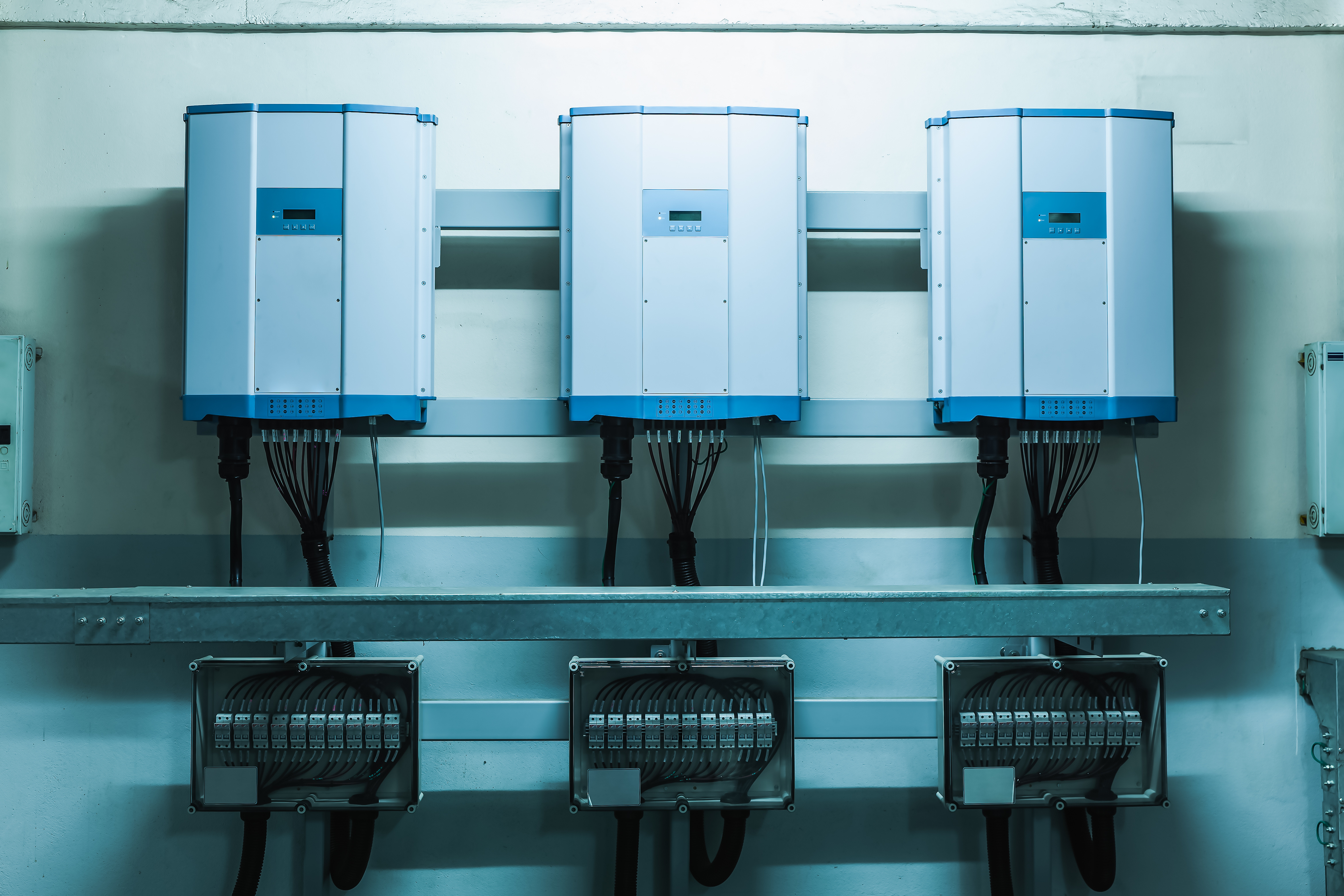
Apex Clean Energy announced that First Citizens Bank Energy Finance business served as sole bookrunner and co-lead arranger on financings totaling more than $150 million for two battery energy storage projects in Texas.
Great Kiskadee Storage is a 100 MW/200 MWh battery energy storage system owned by SA Grid Solutions (a joint venture of Apex, SK Gas, and SK Eternix) and under construction in Hidalgo County, Texas. The other facility, Angelo Storage, is a 100 MW/200 MWh battery energy storage system in Tom Green County, Texas, also under construction. Both are expected to reach commercial operation by the third quarter of 2024. Bank United also served as co-lead arranger on the financings.
“Battery storage is crucial to building a more resilient grid and enhancing the reliability and cost-effectiveness of renewable energy—ultimately enabling our mission to accelerate the shift to clean energy,” said Ken Young, Apex Clean Energy CEO. “We greatly appreciated the industry knowledge and expertise of the First Citizens Energy Finance team in helping arrange these financings.”
“Apex Clean Energy has a strong and growing reputation throughout the renewable energy industry for identifying attractive clean energy project opportunities and managing them to successful completion,” said Mike Lorusso, managing director and group head for First Citizens Energy Finance. “It was a pleasure to work with them on this financing and we look forward to further opportunities to collaborate in the future.”
Apex Clean Energy | apexcleanenergy.com

AG Consultancy, the SAP solutions specialists, has launched the first tool of its kind designed to overcome challenges posed by the implementation of global health and safety standards and Ex/ATEX inspections in the oil and gas industry and wider energy sector.
The Aberdeen based business – which also has an office in London - has now unveiled the programme to companies, with North Sea operator Spirit Energy becoming the first to adopt the solution. At the 2024 SAP Customer Success Awards, Spirit won the Sustainability Hero category for use of the solution.
‘Smart Ex’ allows businesses to undertake Ex/ATEX inspections internally within SAP without the need for third party products which can lead to difficulties and inefficiencies in managing multiple IT solutions lacking a ‘single source of truth’. The fully integrated solution is an end-to-end tool which encompasses planning, execution and analysis and covers the full life cycle of Ex/ATEX inspections.
Deepal Ratnayaka, director SAP consultancy services at AG Consultancy, said: “For the oil and gas sector – and wider energy industry – the problems posed by the use of multiple platforms when undertaking Ex/ATEX Inspections are significant and the challenges for companies can be demanding.
“’Smart Ex’ allows businesses access to mobile, real-time updates on a single system for more up to date insights for informed decision making by bringing together work management and inspection management needs, negating the need for two separate IT solutions.”
The software – which is designed to be regularly updated with the latest technology including Artificial Intelligence and machine learning – manages various types of inspections including integrity inspections, compliance checks, tool calibrations and maintenance checklists.
It complies with safety standards IEC60079, NEC500/505 and ATEX and a digital auditing trail allows for full traceability of inspections.
Benefits include the reduction of manual, duplicate efforts in system updates, time savings technicians, better insights to operation, a ‘single source of truth’ and the demonstration of better compliance via audit trails and analytics.
Ratnayaka added: “As Ex/ATEX Inspections are an important business process, critical to the safety of staff and ongoing operations, we believe this tool can be revolutionary for organisations that are currently grappling with how best to address the challenge with multiple IT systems.
“As a trusted SAP Gold Partner, AG not only excels in consultancy but also innovates by developing products that enhance SAP solutions. Our extensive industry knowledge in oil and gas and energy, combined with our SAP proficiency, allows us to tailor SAP solutions to specific business needs. The successful implementation of ‘Smart Ex’ for Ex/ATEX Inspections at Spirit Energy is a prime example of our expertise.”
AG Consultancy | https://www.agcapps.com/
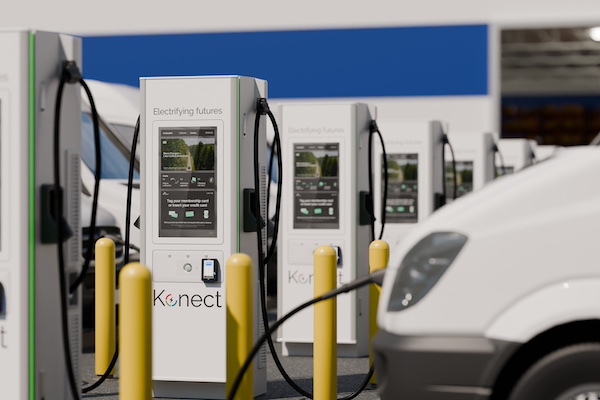
Gilbarco Veeder-Root (GVR), worldwide leader in retail and commercial fueling and convenience technology, has launched Konect – a powerful electric vehicle (EV) recharging ecosystem designed specifically for the fuel retail industry.
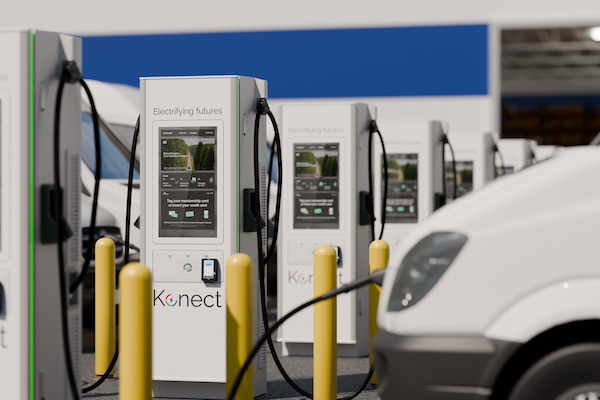
Launched today at UNITI expo, the leading trade fair for the fuel retail sector, Konect offers a unique, fully integrated, site-wide suite of market-leading EV charging hardware and software solutions for businesses wanting to install their own EV charging infrastructure while driving down costs and maximizing return on investment (ROI).
Konect’s mission is to create the most compelling business case for fuel retailers to install EV charging on their sites. They do this by minimizing upfront capital and ongoing operating expenses while unlocking new profit pools, creating a meaningful ROI.
Konect provides wrap around support – including consultancy, installation, maintenance and customer service. It’s a flexible, streamlined solution which enables customers to future-proof their facilities without distracting them from their core business. At the heart of the solution is a state-of-the-art EV charging system, co-developed with global EV charging technology leader, SK Signet Inc.
Developed for seamless integration capability with Gilbarco Veeder-Root’s existing full-site fueling, payment and service solutions, Konect enables new profit opportunities for fuel retailers, while empowering them to accelerate the journey to electric mobility. Fleet operators are also able to specify a turnkey, seamlessly connected EV charging offering that optimizes operational efficiency and delivers a smooth transition to electrification.
Dave Coombe, President, Gilbarco Veeder-Root, said: “At Gilbarco Veeder-Root, we are forging a future where charging for EVs isn’t just a necessity, but a profitable venture globally – and we are seeing exciting growth in this area for our business and clients. With the launch of Konect, we are signaling our commitment to helping customers transcend current limitations in the EV charging market and accelerate value realization for their business.”
Om Shankar, Vice President & General Manager, Konect, said: “EV adoption is at a critical point, with people and businesses needing confidence to make the switch. Widely accessible charging infrastructure is the key to further uptake, and we aspire to remove hurdles and build an incredible business case for fuel retailers to play a major part in the EV transition.
“Gilbarco Veeder-Root already offers some of the best software and payment capability in the world, and we're working with a leading EV charger developer, SK Signet, to provide the most powerful recharging ecosystem our industry has ever seen. Konect is fully integrate-able with our existing full-site solutions, and is poised to help supercharge the transition to electric mobility.”
A seamless EV charging offering with fully integrated technology
Konect is ready to support and manage every step of the EV charging journey, including site selection and funding options, providing market-leading hardware and software solutions, and integration with on-site energy storage, loyalty schemes and point-of-sale equipment.
The deep strategic alliance with SK Signet has been built from the ground-up to deliver the best EV charger for fuel retailers’ needs. The new system utilizes a common dispenser design unique to Konect, deployable across distributed and all-in-one charging applications. The dispenser features innovative payment, media and loyalty technology from Gilbarco Veeder-Root, and SK Signet’s industry-leading DC fast-charging infrastructure – combining to deliver a seamless charging experience for businesses and end-users.
Jung-ho Shin, Chief Executive Officer, SK Signet Inc, said: “The gap in readily available and accessible EV charging infrastructure is a major barrier to the broad adoption of electric vehicles. By integrating SK Signet’s fast-chargers into the Konect platform, we will meet the needs of current and future EV drivers by providing more convenient, seamless and reliable charging solutions.”
Defined by a hard-wearing, ergonomic design, ease-of-use and maintenance are central to the charging system. A high-brightness LCD touchscreen features an intuitive user interface, adaptable depending on customer needs, complemented by an OTA-updatable FlexPay 6 ‘Invenco by GVR’ card reader that enables fast, seamless payment. The adaptable 17-foot charging cable provides freedom and flexibility in use, while an optional safety switch allows users to immediately stop charging if required.
The intelligent charging infrastructure is an integral part of a broader, fully integrated ecosystem. Based on a central cloud-based platform, the network connects multiple on-site services – from the point-of-sale payment and loyalty systems, to localized energy management and off-grid charging solutions. The ecosystem can also be adapted for fleet operators’ requirements – enabling businesses in both sectors to maximize operational efficiency and profitability.
SK Signet, based in Seoul, South Korea, will manufacture the EV charging equipment for Konect in the U.S. and Korea.
Gilbarco Veeder-Root | https://www.gilbarco.com/us/
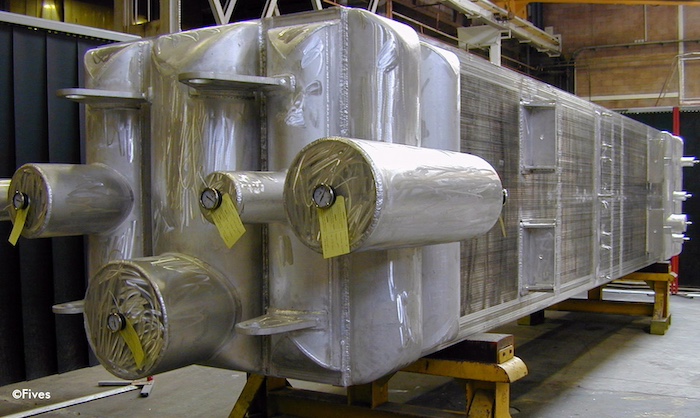
The HyGen project is led by three major experts: Fives, a global industrial engineering group, leader of the consortium, and two main research players, the CEA and the École des Mines de Saint-Etienne.
This research and development program aims to substantially increase the scale of the equipment necessary for the use of liquid hydrogen in favor of low-carbon mobility.
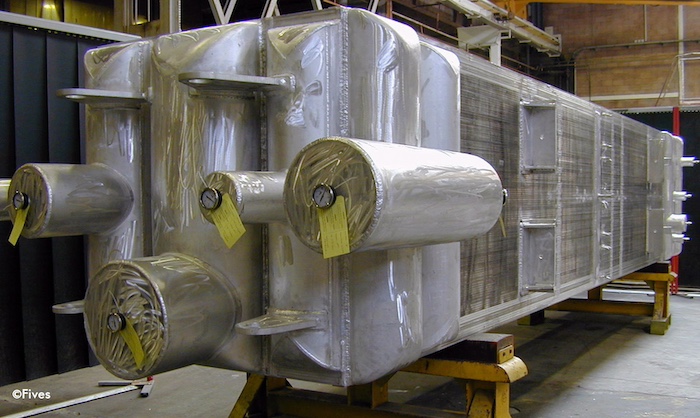
HyGen received funding of €3.4M from the French Government as part of the program France 2030 operated by ADEME and is thus fully part of the French national strategy to boost decarbonized hydrogen.
This project will contribute to the creation of 85 new jobs in the Grand-Est region where the Fives group has been established for over 120 years.
TECHNOLOGICAL LEADERSHIP IN HYDROGEN AT THE SERVICE OF LOW-CARBON MOBILITY
A technological leader in cryogenics for 65 years, Fives, with more than 50 references in hydrogen liquefaction, is the partner of the world’s largest players in industrial gases.
Thanks to the alliance of the members of the consortium expertise, HyGen aims to:
A HISTORIC PLAYER IN THE ECONOMIC DYNAMISM OF THE GRAND-EST REGION
The hydrogen equipment are designed in Fives’ workshops in Golbey, in the Vosges, where the Group employs more than 370 people.
To support the growth of its hydrogen activity, Fives plans to recruit 85 new people by 2030 in its key professions (preliminary design, engineering, quality, welding, production, etc.). The HyGen project will also involve third-party stakeholders (subcontractors, suppliers) and thus boost the regional economic ecosystem.
“As a leader in hydrogen liquefaction equipment, we are proud, with the HyGen project, to participate in the growth of this sector in France. A pioneer in the decarbonization of industry, Fives aims, with its partners, to support the energy transition and the green mobility” declares Vincent Pourailly, President of the Business Line Energy | Cryogenics of Fives.
Fives Group | www.fivesgroup.com

Ascent Solar Technologies, (Nasdaq: ASTI) (“ASTI” or the “Company”), the leading U.S. innovator in the design and manufacture of featherweight, flexible, and durable CIGS thin-film photovoltaic (PV) solutions, announced it has received a firm order from a leading mega-constellation satellite manufacturer for initial delivery of PV modules for evaluation. The Ascent delivered product will be extensively evaluated for incorporation into the manufacturer’s next-generation hardware.
Following delivery and the successful completion of the on-orbit technology for use in the target environment (low Earth orbit (LEO)), it is Ascent’s intent to design and manufacture Plug and Fly arrays in concert with the customer for delivery of these units as early as Q4 2024-Q1 2025. The arrays delivered will provide primary power to the next generation satellites, significantly reducing part count, weight, and system complexity.
Ascent’s products represent a solution for customers and partners resulting from years of development and testing, including NASA’s MISSE-X experiment on the International Space Station (ISS), as well as advanced environmental testing conducted by Japanese Aerospace Exploration Agency (JAXA). Recent testing and results have consistently exceeded expectations and outperformed alternative solar technologies when comparing degradation from exposure to the space environment.
“Our technology is uniquely positioned for adoption by premier mega-constellation satellite manufacturing companies like this, ultimately demonstrating further proof-of-concept for our thin-film’s use in space environments,” said Paul Warley, CEO of Ascent Solar Technologies. “This globally recognized Company is at the forefront of the industry, and will leverage use of our advanced PV technology to further raise the bar. Many in the aerospace manufacturing industry understand that Ascent’s technology will reduce costs while providing a superior product capable of reliable, efficient performance in the harsh conditions of space.”
This initial order and the potential revenue it represents aligns with the Corporate Update released by Ascent on March 8, 2024, which highlighted a rapidly growing market opportunity in the aerospace sector, as well as Ascent’s goals for revenue generation.
Ascent Solar Technologies | https://www.ascentsolar.com

Alternative Energies Jun 26, 2023
Unleashing trillions of dollars for a resilient energy future is within our grasp — if we can successfully navigate investment risk and project uncertainties. The money is there — so where are the projects? A cleaner and more secure energy ....
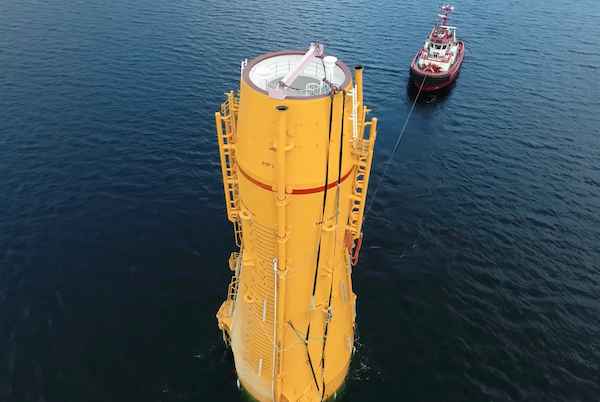
The Kincardine floating wind farm, located off the east coast of Scotland, was a landmark development: the first commercial-scale project of its kind in the UK sector. Therefore, it has been closely watched by the industry throughout its installation. With two of the turbines now having gone through heavy maintenance, it has also provided valuable lessons into the O&M processes of floating wind projects.
In late May, the second floating wind turbine from the five-turbine development arrived in the port of Massvlakte, Rotterdam, for maintenance. An Anchor Handling Tug Supply (AHTS)
vessel was used to deliver the KIN-02 turbine two weeks after a Platform Supply Vessel (PSV) and AHTS had worked to disconnect the turbine from the wind farm site. The towing vessel became the third vessel used in the operation.
This is not the first turbine disconnected from the site and towed for maintenance. In the summer of 2022, KIN-03 became the world’s first-ever floating wind turbine that required heavy maintenance (i.e. being disconnected and towed for repair). It was also towed from Scotland to Massvlakte.
Each of these operations has provided valuable lessons for the ever-watchful industry in how to navigate the complexities of heavy maintenance in floating wind as the market segment grows.

The heavy maintenance process
When one of Kincardine’s five floating 9.5 MW turbines (KIN-03) suffered a technical failure in May 2022, a major technical component needed to be replaced. The heavy maintenance strategy selected by the developer and the offshore contractors consisted in disconnecting and towing the turbine and its floater to Rotterdam for maintenance, followed by a return tow and re-connection. All of the infrastructure, such as crane and tower access, remained at the quay following the construction phase. (Note, the following analysis only covers KIN-03, as details of the second turbine operation are not yet available).
Comparing the net vessel days for both the maintenance and the installation campaigns at this project highlights how using a dedicated marine spread can positively impact operations.
For this first-ever operation, a total of 17.2 net vessel days were required during turbine reconnection—only a slight increase on the 14.6 net vessel days that were required for the first hook-up operation performed during the initial installation in 2021. However, it exceeds the average of eight net vessel days during installation. The marine spread used in the heavy maintenance operation differed from that used during installation. Due to this, it did not benefit from the learning curve and experience gained throughout the initial installation, which ultimately led to the lower average vessel days.
The array cable re-connection operation encountered a similar effect. The process was performed by one AHTS that spent 10 net vessel days on the operation. This compares to the installation campaign, where the array cable second-end pull-in lasted a maximum of 23.7 hours using a cable layer.
Overall, the turbine shutdown duration can be broken up as 14 days at the quay for maintenance, 52 days from turbine disconnection to turbine reconnection, and 94 days from disconnection to the end of post-reconnection activities.
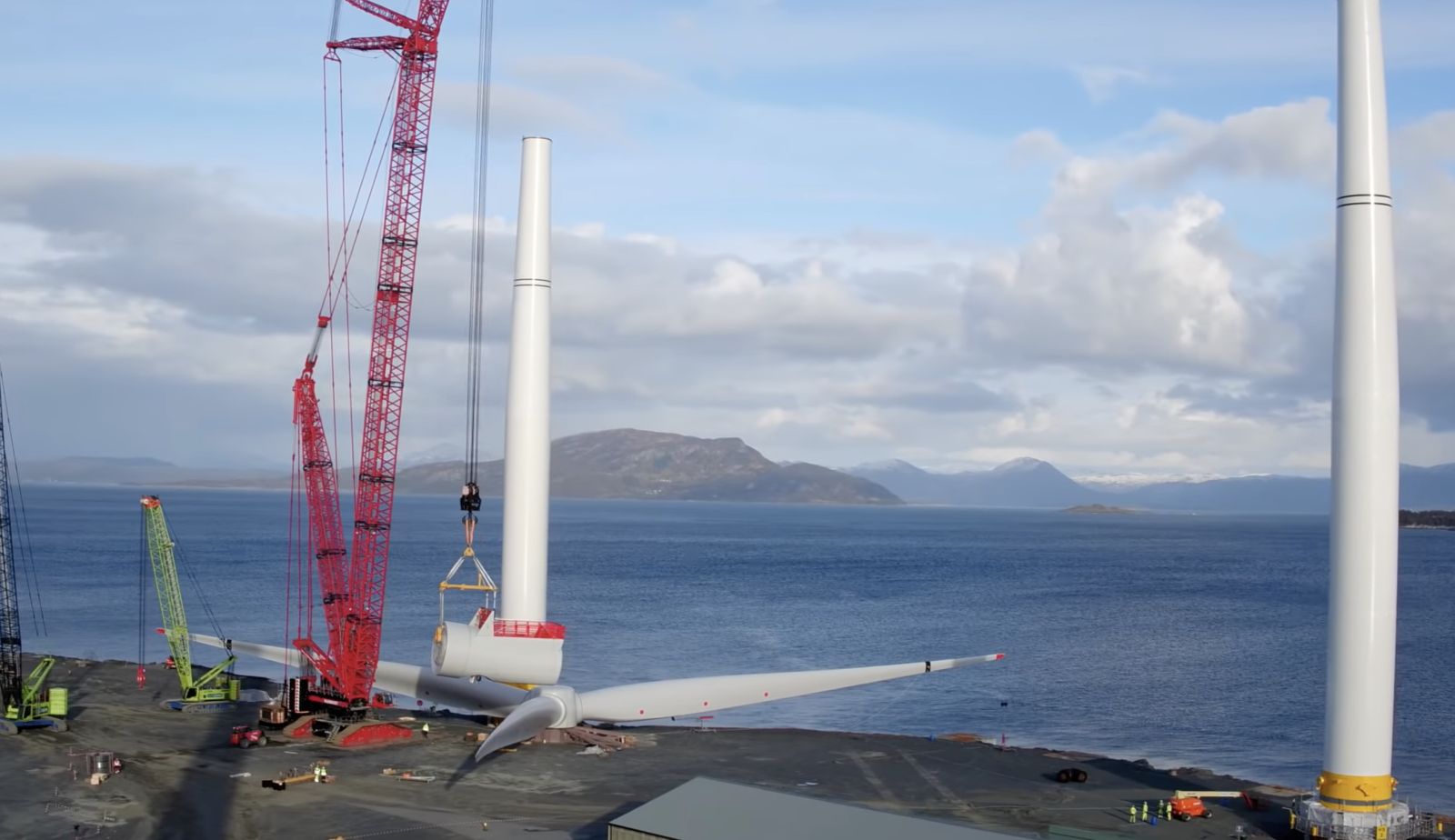
What developers should keep in mind for heavy maintenance operations
This analysis has uncovered two main lessons developers should consider when planning a floating wind project: the need to identify an appropriate O&M port, and to guarantee that a secure fleet is available.
Floating wind O&M operations require a port with both sufficient room and a deep-water quay. The port must also be equipped with a heavy crane with sufficient tip height to accommodate large floaters and reach turbine elevation. Distance to the wind farm should also be taken into account, as shorter distances will reduce towing time and, therefore, minimize transit and non-productive turbine time.
During the heavy maintenance period for KIN-03 and KIN-02, the selected quay (which had also been utilized in the initial installation phase of the wind farm project), was already busy as a marshalling area for other North Sea projects. This complicated the schedule significantly, as the availability of the quay and its facilities had to be navigated alongside these other projects. This highlights the importance of abundant quay availability both for installation (long-term planning) and maintenance that may be needed on short notice.
At the time of the first turbine’s maintenance program (June 2022), the North Sea AHTS market was in an exceptional situation: the largest bollard pull AHTS units contracted at over $200,000 a day, the highest rate in over a decade.
During this time, the spot market was close to selling out due to medium-term commitments, alongside the demand for high bollard pull vessels for the installation phase at a Norwegian floating wind farm project. The Norwegian project required the use of four AHTS above a 200t bollard pull. With spot rates ranging from $63,000 to $210,000 for the vessels contracted for Kincardine’s maintenance, the total cost of the marine spread used in the first repair campaign was more than $4 million.
Developers should therefore consider the need to structure maintenance contracts with AHTS companies, either through frame agreements or long-term charters, to decrease their exposure to spot market day rates as the market tightens in the future.

While these lessons are relevant for floating wind developers now, new players are looking towards alternative heavy O&M maintenance options for the future. Two crane concepts are especially relevant in this instance. The first method is for a crane to be included in the turbine nacelle to be able to directly lift the component which requires repair from the floater, as is currently seen on onshore turbines. This method is already employed in onshore turbines and could be applicable for offshore. The second method is self-elevating cranes with several such solutions already in development.
The heavy maintenance operations conducted on floating turbines at the Kincardine wind farm have provided invaluable insights for industry players, especially developers. The complex process of disconnecting and towing turbines for repairs highlights the need for meticulous planning and exploration of alternative maintenance strategies, some of which are already in the pipeline. As the industry evolves, careful consideration of ports, and securing fleet contracts, will be crucial in driving efficient and cost-effective O&M practices for the floating wind market.
Sarah McLean is Market Research Analyst at Spinergie, a maritime technology company specializing in emission, vessel performance, and operation optimization.
Spinergie | www.spinergie.com

According to the Energy Information Administration (EIA), developers plan to add 54.5 gigawatts (GW) of new utility-scale electric generating capacity to the U.S. power grid in 2023. More than half of this capacity will be solar. Wind power and battery storage are expected to account for roughly 11 percent and 17 percent, respectively.
A large percentage of new installations are being developed in areas that are prone to extreme weather events and natural disasters (e.g., Texas and California), including high wind, tornadoes, hail, flooding, earthquakes, wildfires, etc. With the frequency and severity of many of these events increasing, project developers, asset owners, and tax equity partners are under growing pressure to better understand and mitigate risk.
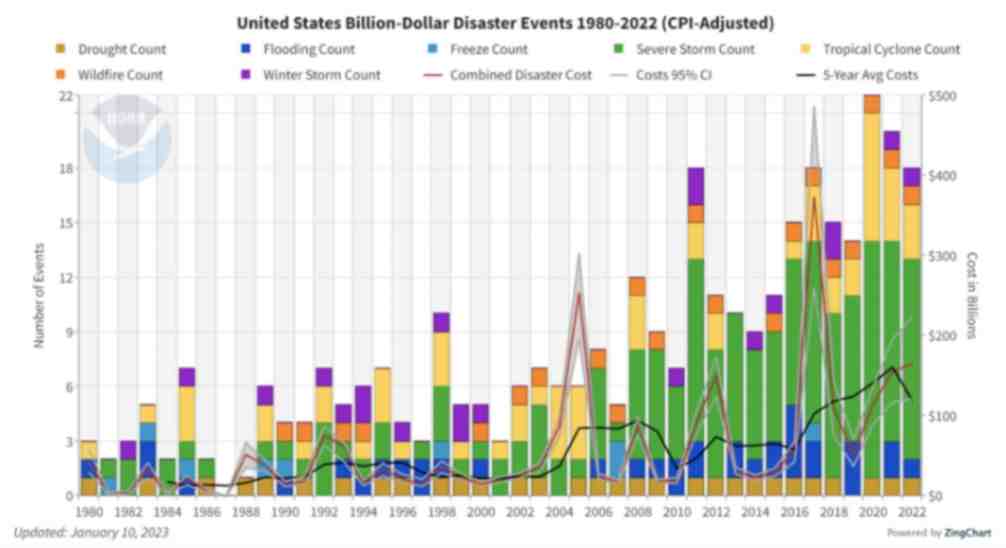
Figure 1. The history of billion-dollar disasters in the United States each year from 1980 to 2022 (source: NOAA)
In terms of loss prevention, a Catastrophe (CAT) Modeling Study is the first step to understanding the exposure and potential financial loss from natural hazards or extreme weather events. CAT studies form the foundation for wider risk management strategies, and have significant implications for insurance costs and coverage.
Despite their importance, developers often view these studies as little more than a formality required for project financing. As a result, they are often conducted late in the development cycle, typically after a site has been selected. However, a strong case can be made for engaging early with an independent third party to perform a more rigorous site-specific technical assessment. Doing so can provide several advantages over traditional assessments conducted by insurance brokerage affiliates, who may not possess the specialty expertise or technical understanding needed to properly apply models or interpret the results they generate. One notable advantage of early-stage catastrophe studies is to help ensure that the range of insurance costs, which can vary from year to year with market forces, are adequately incorporated into the project financial projections.
The evolving threat of natural disasters
Over the past decade, the financial impact of natural hazard events globally has been almost three trillion dollars. In the U.S. alone, the 10-year average annual cost of natural disaster events exceeding $1 billion increased more than fourfold between the 1980s ($18.4 billion) and the 2010s ($84.5 billion).

Investors, insurers, and financiers of renewable projects have taken notice of this trend, and are subsequently adapting their behavior and standards accordingly. In the solar market, for example, insurance premiums increased roughly four-fold from 2019 to 2021. The impetus for this increase can largely be traced back to a severe storm in Texas in 2019, which resulted in an $80 million loss on 13,000 solar panels that were damaged by hail.
The event awakened the industry to the hazards severe storms present, particularly when it comes to large-scale solar arrays. Since then, the impact of convective weather on existing and planned installations has been more thoroughly evaluated during the underwriting process. However, far less attention has been given to the potential for other natural disasters; events like floods and earthquakes have not yet resulted in large losses and/or claims on renewable projects (including wind farms). The extraordinary and widespread effect of the recent Canadian wildfires may alter this behavior moving forward.
A thorough assessment, starting with a CAT study, is key to quantifying the probability of their occurrence — and estimating potential losses — so that appropriate measures can be taken to mitigate risk.
All models are not created equal
Industrywide, certain misconceptions persist around the use of CAT models to estimate losses from an extreme weather event or natural disaster.
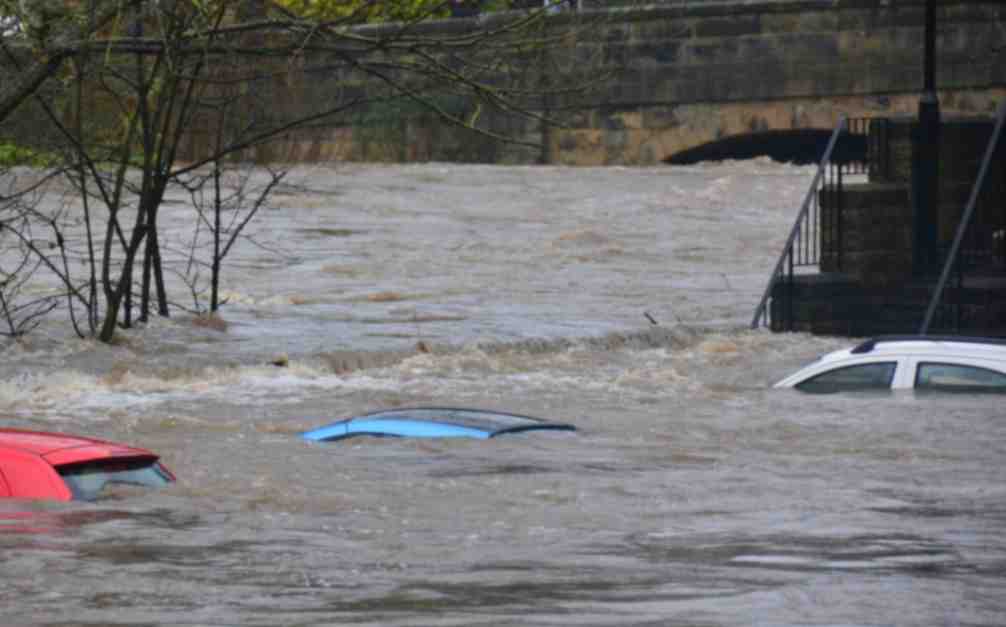
Often, the perception is that risk assessors only need a handful of model inputs to arrive at an accurate figure, with the geographic location being the most important variable. While it’s true that many practitioners running models will pre-specify certain project characteristics regardless of the asset’s design (for example, the use of steel moment frames without trackers for all solar arrays in a given region or state), failure to account for even minor details can lead to loss estimates that are off by multiple orders of magnitude.
The evaluation process has recently become even more complex with the addition of battery energy storage. Relative to standalone solar and wind farms, very little real-world experience and data on the impact of extreme weather events has been accrued on these large-scale storage installations. Such projects require an even greater level of granularity to help ensure that all risks are identified and addressed.
Even when the most advanced modeling software tools are used (which allow for thousands of lines of inputs), there is still a great deal that is subject to interpretation. If the practitioner does not possess the expertise or technical ability needed to understand the model, the margin for error can increase substantially. Ultimately, this can lead to overpaying for insurance. Worse, you may end up with a policy with insufficient coverage. In both cases, the profitability of the asset is impacted.
Supplementing CAT studies
In certain instances, it may be necessary to supplement CAT models with an even more detailed analysis of the individual property, equipment, policies, and procedures. In this way, an unbundled risk assessment can be developed that is tailored to the project. Supplemental information (site-specific wind speed studies and hydrological studies, structural assessment, flood maps, etc.) can be considered to adjust vulnerability models.
This provides an added layer of assurance that goes beyond the pre-defined asset descriptions in the software used by traditional studies or assessments. By leveraging expert elicitations, onsite investigations, and rigorous engineering-based methods, it is possible to discretely evaluate asset-specific components as part of the typical financial loss estimate study: this includes Normal Expected Loss (NEL), also known as Scenario Expected Loss (SEL); Probable Maximum Loss (PML), also known as Scenario Upper Loss (SUL); and Probabilistic Loss (PL).
Understanding the specific vulnerabilities and consequences can afford project stakeholders unique insights into quantifying and prioritizing risks, as well as identifying proper mitigation recommendations.
Every project is unique
The increasing frequency and severity of natural disasters and extreme weather events globally is placing an added burden on the renewable industry, especially when it comes to project risk assessment and mitigation. Insurers have signaled that insurance may no longer be the main basis for transferring risk; traditional risk management, as well as site and technology selection, must be considered by developers, purchasers, and financiers.
As one of the first steps in understanding exposure and the potential capital loss from a given event, CAT studies are becoming an increasingly important piece of the risk management puzzle. Developers should treat them as such by engaging early in the project lifecycle with an independent third-party practitioner with the specialty knowledge, tools, and expertise to properly interpret models and quantify risk.
Hazards and potential losses can vary significantly depending on the project design and the specific location. Every asset should be evaluated rigorously and thoroughly to minimize the margin for error, and maximize profitability over its life.
 Chris LeBoeuf is Global Head of the Extreme Loads and Structural Risk division of ABS Group, based in San Antonio, Texas. He leads a team of more than 60 engineers and scientists in the US, UK, and Singapore, specializing in management of risks to structures and equipment related to extreme loading events, including wind, flood, seismic and blast. Chris has more than 20 years of professional experience as an engineering consultant, and is a recognized expert in the study of blast effects and blast analysis, as well as design of buildings. He holds a Bachelor of Science in Civil Engineering from The University of Texas at San Antonio, and is a registered Professional Engineer in 12 states.
Chris LeBoeuf is Global Head of the Extreme Loads and Structural Risk division of ABS Group, based in San Antonio, Texas. He leads a team of more than 60 engineers and scientists in the US, UK, and Singapore, specializing in management of risks to structures and equipment related to extreme loading events, including wind, flood, seismic and blast. Chris has more than 20 years of professional experience as an engineering consultant, and is a recognized expert in the study of blast effects and blast analysis, as well as design of buildings. He holds a Bachelor of Science in Civil Engineering from The University of Texas at San Antonio, and is a registered Professional Engineer in 12 states.
ABS Group | www.abs-group.com

Grid modernization is having a profound impact on the nature and regulation of North American utilities. It represents a significant change to the way energy is managed, distributed, and used—today and in the future. As Environmental, Social, and Governance (ESG) targets become increasingly important to energy investors and regulators, how can organizations transform their Asset Investment Planning (AIP) processes to overcome challenges and take advantage of emerging opportunities?

Grid modernization
The energy transition refers to the global energy sector’s shift from fossil-based systems of energy production and consumption to renewable energy sources like wind and solar, as well as long-term energy storage such as batteries. The increasing penetration of renewable energy into the energy supply mix and the onset of electrification and improvements in energy storage are key drivers of the energy transition.
Grid modernization is a subset of the energy transition, and refers to changes needed in the electric transmission and distribution (T&D) systems to accommodate these rapid and innovative technological changes. Grid modernization often necessitates the increased application of sensors, computers, and communications to increase the intelligence of the grid and its ability to respond swiftly to external factors. The main goals of the grid are to provide the capacity, reliability, and flexibility needed to adapt to a whole range of new technologies (in the drive to net zero), while maintaining a comparable level of service and cost to the end customer.
Grid modernization projects are driven by both climate resilience through hardening of assets and changes to the T&D network to accommodate climate mitigation strategies. There are 3 broad categories for these types of projects:
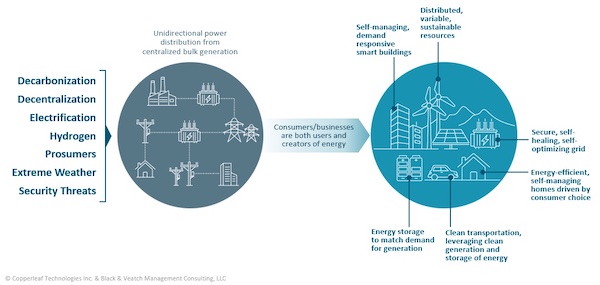
Grid modernization is accelerating due to multiple factors, such as decarbonization, electrification, extreme weather, and security threats.
Valuing innovative projects
The changing demands dictated by grid modernization will require organizations to strike the right balance between cost-effectively managing the current business, while investing appropriately to meet future demands. Organizations are already seeing an increase in both the volume and variety of grid modernization projects. This is leading to increased planning complexity, requiring utilities to demonstrate that they are spending their limited budgets and resources to maximize value and drive their ESG and performance targets.
A value-based approach to investment decision making is key to establishing a common basis to evaluate potential investment opportunities and meet the challenges of grid modernization. The key to achieving your organization’s grid modernization goals is building a multi-year plan that breaks the work into executable chunks. This ensures adequate funding and resources are available to carry out the plan in the short-term, resulting in incremental progress toward longer-term objectives.
With a value-based decision-making approach, organizations can ensure they are making the right grid modernization investments—and justify their plans to internal and external stakeholders.
Align decisions with strategic objectives
Business leaders must develop frameworks that quantify the financial and non-financial benefits of all proposed investments on a common scale and understand how projects will contribute to their short- and long-term grid modernization initiatives and broader energy transition goals. A value framework also creates a clear line of sight from planned investments to regulatory and corporate targets, allowing organizations to provide transparency into the decision-making methodology—and demonstrate the benefits of their plans to regulators, stakeholders, and customers:
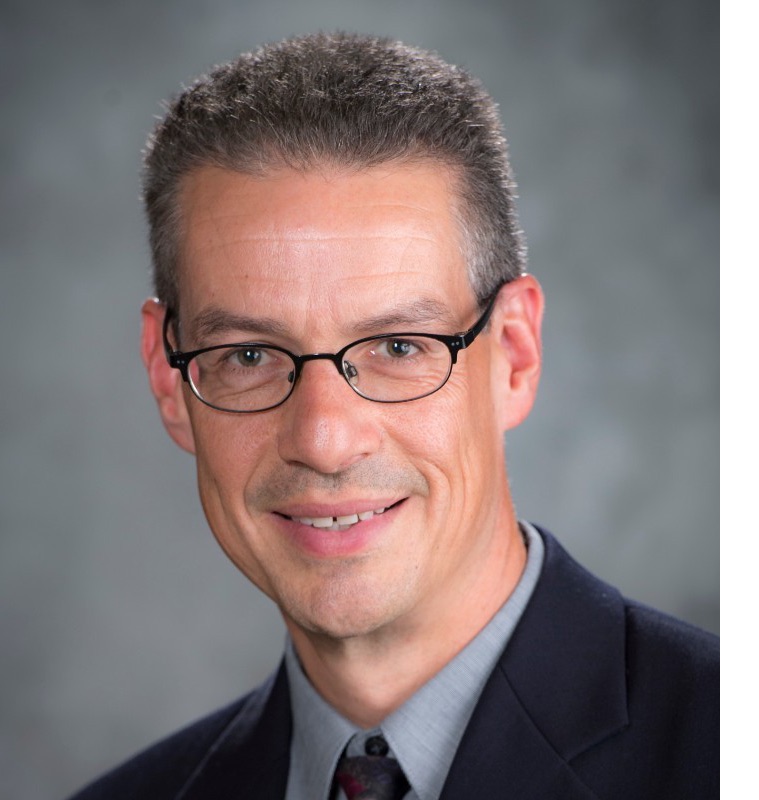 Russ is a Director of Product Management, Decision Analytics at Copperleaf. He is an innovative leader with over 20 years of comprehensive business and technical experience in high-tech product development organizations. Russ holds a B.A.Sc. in Mechanical Engineering from the University of British Columbia and a Management of Technology MBA from Simon Fraser University.
Russ is a Director of Product Management, Decision Analytics at Copperleaf. He is an innovative leader with over 20 years of comprehensive business and technical experience in high-tech product development organizations. Russ holds a B.A.Sc. in Mechanical Engineering from the University of British Columbia and a Management of Technology MBA from Simon Fraser University.
Copperleaf | www.copperleaf.com
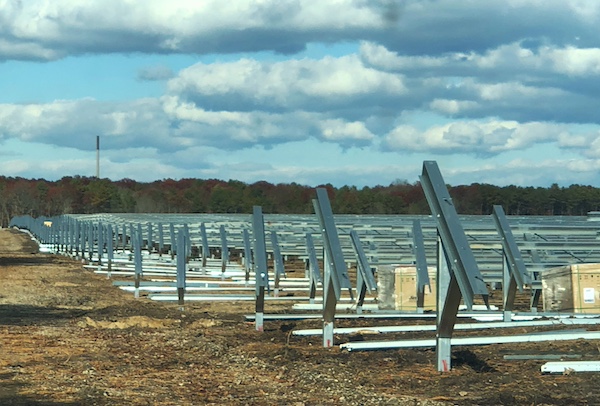
Throughout my life and career as a real estate developer in New York City, I’ve had many successes. In what is clearly one of my most unusual development projects in a long career filled with them, I initiated the building of a solar farm to help t....

I’m just going to say it, BIPV is dumb. Hear me out…. Solar is the most affordable form of energy that has ever existed on the planet, but only because the industry has been working towards it for the past 15 years. Governments,....
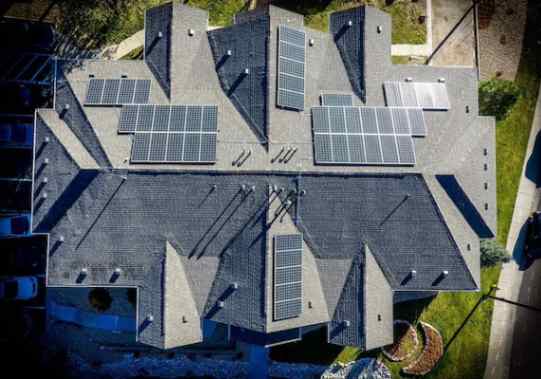
Heat waves encircled much of the earth last year, pushing temperatures to their highest in recorded history. The water around Florida was “hot-tub hot” — topping 101° and bleaching and killing coral in waters around the peninsula. Phoenix had ....
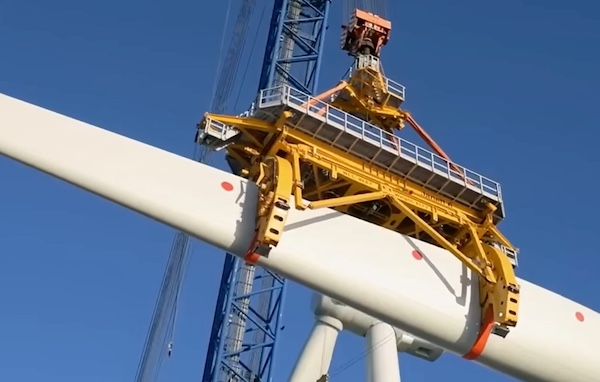
Wind turbines play a pivotal role in the global transition to sustainable energy sources. However, the harsh environmental conditions in which wind turbines operate, such as extreme temperatures, high humidity, and exposure to various contaminants, p....
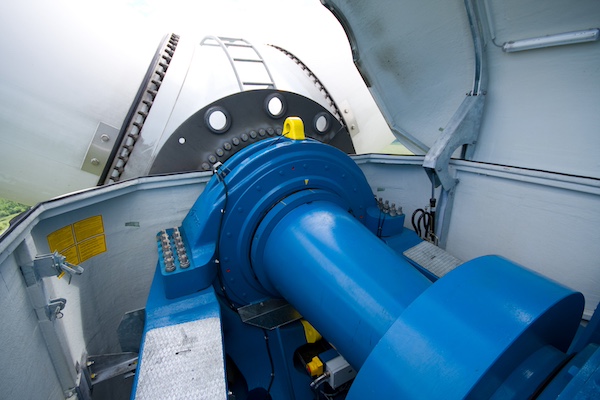
Wind energy remains the leading non-hydro renewable technology, and one of the fastest-growing of all power generation technologies. The key to making wind even more competitive is maximizing energy production and efficiently maintaining the assets. ....
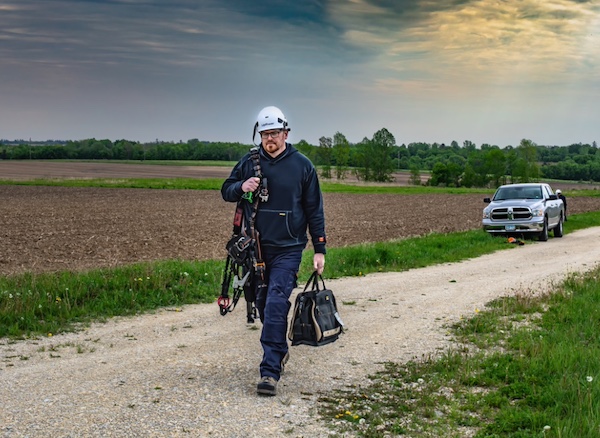
The allure of wind turbines is undeniable. For those fortunate enough to visit these engineering marvels, it’s an experience filled with awe and learning. However, the magnificence of these structures comes with inherent risks, making safety an abs....
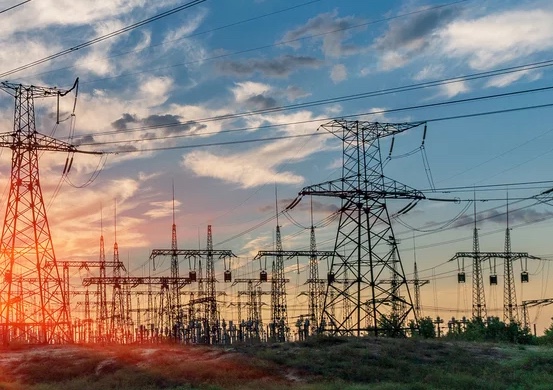
Battery energy storage is a critical technology to reducing our dependence on fossil fuels and build a low carbon future. Renewable energy generation is fundamentally different from traditional fossil fuel energy generation in that energy cannot be p....
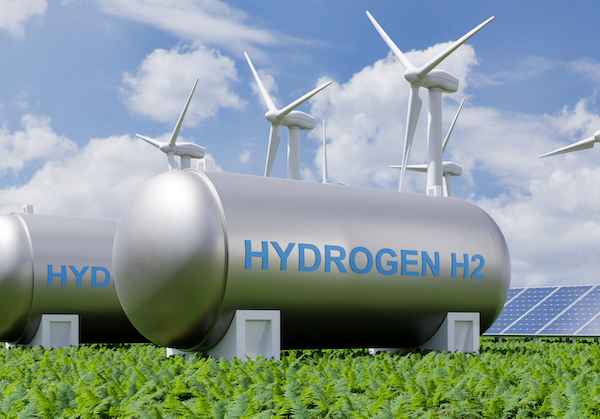
Not enough people know that hydrogen fuel cells are a zero-emission energy technology. Even fewer know water vapor's outsized role in electrochemical processes and reactions. Producing electricity through a clean electrochemical process with water....

In the ever-evolving landscape of sustainable transportation, a ground-breaking shift is here: 2024 ushers in a revolutionary change in Electric Vehicle (EV) tax credits in the United States. Under the Inflation Reduction Act (IRA), a transforma....

Now more than ever, it would be difficult to overstate the importance of the renewable energy industry. Indeed, it seems that few other industries depend as heavily on constant and rapid innovation. This industry, however, is somewhat unique in its e....

University of Toronto’s latest student residence welcomes the future of living with spaces that are warmed by laptops and shower water. In September 2023, one of North America’s largest residential passive homes, Harmony Commons, located....
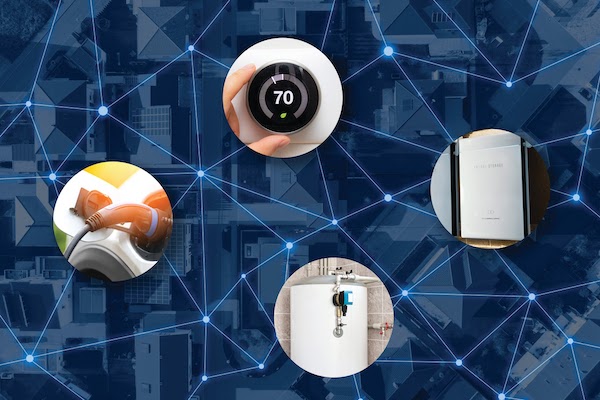
For decades, demand response (DR) has proven a tried-and-true conservation tactic to mitigate energy usage during peak demand hours. Historically, those peak demand hours were relatively predictable, with increases in demand paralleling commuter and ....